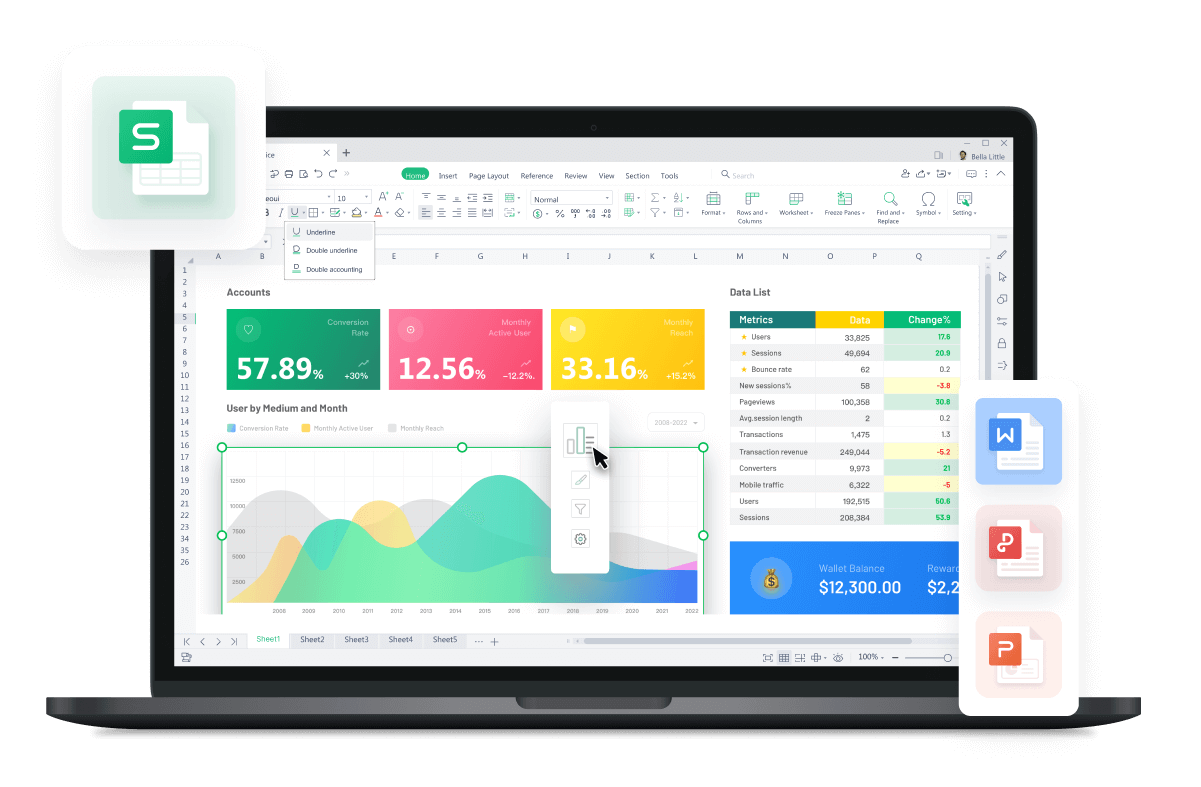Free All-in-One Office Suite with PDF Editor
Edit Word, Excel, and PPT for FREE.
Read, edit, and convert PDFs with the powerful PDF toolkit.
Microsoft-like interface, easy to use.
Windows • MacOS • Linux • iOS • Android

How to create a Combination chart quickly
Uploaded time: March 4, 2022 Difficulty Beginner
How to create a Combination chart quickly

How to create a Combination chart quickly
The Combination chart combines two or more types of charts in one coordinate system. We take this table as an example to explain how to make a Combination chart in WPS Spreadsheet.
Here is the data of temperature and rainfall in a region. From this table, we can see three sets of data, namely, Rainfall, Mean Rainfall, and Temperature.
We choose the cell range A1:D8, click the Insert tab, click Chart, and select Combo in the pop-up dialog.
At the top of the dialog, WPS Spreadsheet provides three popular preset combination charts for selection, among which the Clustered Column line is the most classic one.
In the lower area of the dialog, we can set the needed Chart Type according to Series name.
For the Rainfall series, we choose Area.
For the Mean Rainfall series, we choose Line.
For the Temperature series, we choose Area.
It's important to note that data in different units cannot share one coordinate axis; otherwise, you will get a chart with the wrong data. In this example, the units of Temperature and Rainfall are inconsistent. So we need to check Secondary Axis for the Temperature series.As you can see from the preview, the data changed immediately.
Then click the preview to insert this combination chart. Enlarge the chart to an appropriate size. You can see the left coordinate axis corresponds to rainfall and the right one temperature.
If we want to change the chart types, click Change Chart Type to reenter the Combo dialog. Re-select the needed chart type for each series and then insert it again.
To make the data clearer, we want to use different colors to distinguish the rainfall columns above and below average. Now we learn a trick to make the data change color automatically.
Come to sheet 2, and we need to simply process the data.
First, input =IF in the cell E2, and press the Enter key.
Then, input B2>C2,B2,0.
Then press the Enter key and fill the formula with the fill handle.
Now we have extracted the values that are greater than the average.
The principle is simple, and we go back to the formula now.
It actually uses the IF function to judge rainfall. When the value is greater than the average rainfall, it returns the value itself; otherwise, it returns 0.
Similarly, we use the IF function to extract the needed values in the Below average column.
Select all the dates except the Rainfall column, and insert the combination chart in the previous way.
Then the chart is generated with the data in different colors, and we don't have to change the colors of the columns.
Moreover, the colors of the chart will change as the source data.
Isn't it convenient?
Certainly, we need to further improve the chart, such as perfecting its layout, adding chart elements, and so on.
This tutorial will stop here and you can click the related tutorials on the right to learn about it.
These are the methods of how to customize a combination chart. Did you get it?
Also Read:
- 1. How to draw a column chart in WPS Spreadsheet
- 2. Create an area chart to display data trends
- 3. Create simple and intuitive mini charts
- 4. How to insert a chart and edit the chart data
- 5. Use pivot chart to create a dynamic chart
- 6. How to insert a chart and edit the chart data in WPS Presentation

Does this video help you?